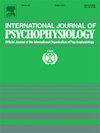Transcranial alternating current stimulation for investigating complex oscillatory dynamics and interactions
IF 2.5
3区 心理学
Q3 NEUROSCIENCES
引用次数: 0
Abstract
Neural oscillations play a fundamental role in human cognition and behavior. While electroencephalography (EEG) and related methods provide precise temporal recordings of these oscillations, they are limited in their ability to generate causal conclusions. Transcranial alternating current stimulation (tACS) has emerged as a promising non-invasive neurostimulation technique to modulate neural oscillations, which offers insights into their functional role and relation to human cognition and behavior. Originally, tACS is applied between two or more electrodes at a given frequency. However, recent advances have aimed to apply different current waveforms to target specific oscillatory dynamics. This systematic review evaluates the efficacy of non-standard tACS applications designed to investigate oscillatory patterns beyond simple sinusoidal stimulation. We categorized these approaches into three key domains: (1) phase synchronization techniques, including in-phase, anti-phase, and traveling wave stimulation; (2) non-sinusoidal tACS, which applies alternative waveforms such as composite, broadband or triangular oscillations; and (3) amplitude-modulated tACS and temporal interference stimulation, which allow for concurrent EEG recordings and deeper cortical targeting. While a number of studies provide evidence for the added value of these non-standard tACS procedures, other studies show opposing or null findings. Crucially, the number of studies for most applications is currently low, and as such, the goal of this review is to highlight both the promise and current limitations of these techniques, providing a foundation for future research in neurostimulation.
经颅交流电刺激研究复杂振荡动力学和相互作用
神经振荡在人类认知和行为中起着重要作用。虽然脑电图(EEG)和相关方法提供了这些振荡的精确时间记录,但它们在产生因果结论的能力方面受到限制。经颅交流电刺激(tACS)作为一种很有前途的非侵入性神经刺激技术来调节神经振荡,这为神经振荡的功能作用及其与人类认知和行为的关系提供了新的见解。最初,tACS以给定的频率应用于两个或多个电极之间。然而,最近的进展旨在应用不同的电流波形来针对特定的振荡动力学。本系统综述评估了非标准tACS应用程序的有效性,该应用程序旨在研究简单正弦刺激以外的振荡模式。我们将这些方法分为三个关键领域:(1)相位同步技术,包括同相、反相和行波刺激;(2)非正弦tACS,它应用替代波形,如复合、宽带或三角振荡;(3)调幅tACS和时间干扰刺激,允许并发脑电图记录和更深层的皮层靶向。虽然一些研究为这些非标准tACS程序的附加价值提供了证据,但其他研究显示反对或无效的结果。至关重要的是,目前大多数应用的研究数量很少,因此,本综述的目的是强调这些技术的前景和当前的局限性,为未来的神经刺激研究提供基础。
本文章由计算机程序翻译,如有差异,请以英文原文为准。
求助全文
约1分钟内获得全文
求助全文
来源期刊
CiteScore
5.40
自引率
10.00%
发文量
177
审稿时长
3-8 weeks
期刊介绍:
The International Journal of Psychophysiology is the official journal of the International Organization of Psychophysiology, and provides a respected forum for the publication of high quality original contributions on all aspects of psychophysiology. The journal is interdisciplinary and aims to integrate the neurosciences and behavioral sciences. Empirical, theoretical, and review articles are encouraged in the following areas:
• Cerebral psychophysiology: including functional brain mapping and neuroimaging with Event-Related Potentials (ERPs), Positron Emission Tomography (PET), Functional Magnetic Resonance Imaging (fMRI) and Electroencephalographic studies.
• Autonomic functions: including bilateral electrodermal activity, pupillometry and blood volume changes.
• Cardiovascular Psychophysiology:including studies of blood pressure, cardiac functioning and respiration.
• Somatic psychophysiology: including muscle activity, eye movements and eye blinks.

 求助内容:
求助内容: 应助结果提醒方式:
应助结果提醒方式:


